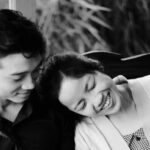
Some great literary fiction from Korean authors has been translated into English in 2021. In case you’re trying to keep up, here are four exciting works of fiction by Choi Eunyoung, Elisa Shua Dusapin, Ae-ran Kim, and Jung Young Moon that have recently been translated into English.
Shoko’s Smile by Choi Eunyoung (trans. Sung Ryu)
Shoko’s Smile is a collection of short stories that examine the interior lives of their characters through personal, often intercultural, encounters. Through these sensitively portrayed interactions, the stories contemplate historical phantoms that hover around and within the characters. The stories also explore women’s relationships with each other from multiple vantage points.
Through Choi’s clear, understated prose, the stories consider South Korea from both intranational and international perspectives. The Sewol sinking is thematized in one story, bringing up a recent Korean national tragedy; while characters from Japan and Vietnam invoke the Japanese occupation of Korea and Korea’s participation in the Vietnam War.
Because the author chooses to focus on psychological portraits of characters, Choi’s approach to history maintains a respectful distance from historical events. Regarding her treatment of the Sewol tragedy, the author explains in an interview:
My portrayal of the sinking is cautious, and never direct, to avoid objectifying the suffering of others in a rough manner, and to show that even people who appear to be unrelated are, in fact, connected to what happened as members of a shared society.
By writing about characters who are around or nearby historical events but not obviously involved with them, Choi registers the societal aftershocks of trauma and the individual processes of grieving that must occur afterwards.
Shoko’s Smile would be a great book for readers who are looking for an intimate examination of how individuals and the greater Korean society they compose are intertwined with one another, and the way in which Korean society is implicated with other societies around the globe.
Winter in Sokcho by Elisa Shua Dusapin (trans. Aneesa Abbas Higgins)
Winter in Sokcho is a short novel in which the unnamed narrator works in a boarding house. While Seoul and its metropolitan weight loom in the distance, the narrator cooks and cleans for work in Sokcho—a vacation town in hibernation for the winter—so she can live near her mother, who works at a fish market.
The narrator never knew her father, who was French. Her boyfriend, an aspiring model, is away in Seoul for most of the novel. When Yan Kerrand, a brusque and aloof Frenchman, arrives as a guest, the narrator finds herself an intriguing new object of interest and a work-related excuse to distract herself from her everyday life. It turns out that Kerrand is a famous graphic novelist who travels to other countries to fuel his books, and the narrator is interested in learning more about him.
Through their interactions—and a bit of the narrator’s digging through Kerrand’s trash—the narrator does learn some about Kerrand, but she discovers even more about herself as well as her Korean and French identities. She visits the DMZ and its eerie museum with Kerrand. She tries to get Kerrand to eat her cooking, though he refuses to eat Korean food and seems to survive off of Dunkin Donuts and Paris Baguette. As the narrator learns enough about Kerrand to be able to imagine herself through his gaze, she ends up realizing that she can envision herself and her life independently.
Winter in Sokcho is a quick and absorbing read. In spite of its frigid setting, the novel’s atmosphere slowly heats up during moments of vibrant tension to carry the plot along.
My Brilliant Life by Ae-ran Kim (trans. Kim Chi-Young)
In Ae-ran Kim’s novel My Brilliant Life, Areum is a teenager with progeria, a condition that causes rapid aging starting from infancy. Although he is sixteen years old, his body is like that of an 80-year-old.
Areum is housebound, and his best friend is a sixty-year-old whom he calls Little Grandpa Jang. Wise beyond his years, Areum is fully aware that he’s living a cloistered life that prevents him from experiencing life as most others can.
Nevertheless, Areum is determined to live a full life. The novel is framed through the metafictional conceit of Areum writing about his parents. They had him when they themselves were sixteen, and he imagines their youths as well as their personal transformations when they become parents. His narration is full of affection for his family as well as an optimism that fights to eclipse his despair.
As Areum’s parents struggle to pay for his costly healthcare, he agrees to give a TV interview to raise some money. The resulting publicity further upends Areum’s life. In the process, his understanding of the people who surround him and of his life situation are transformed.
My Brilliant Life was a bestseller in Korea and was adapted into the 2014 film of the same name. Now the touching novel is available in English.
Arriving in a Thick Fog by Jung Young Moon (trans. Mah Eunji and Jeffrey Karvonen)
Arriving in a Thick Fog is a collection of four interlinked novellas. These novellas, titled “Dog Ear,” “At Penal Colony X,” “Arriving in a Thick Fog,” and “A Certain State of Incapacity,” are not plot-driven stories but rather meticulous studies of active minds—the minds of the collection’s narrators, in particular.
Throughout the collection, the narrators’ minds become stages upon which psychosocial operations become observable and almost acrobatic. Thoughts and memories begin to dance when Jung analyzes moments of mundanity to such an extreme that the everyday world begins to shift in and out of view while daydreams and logical rhizomes come to the foreground, gleam, and disappear.
In “Dog Ear,” for example, the narrator journeys through a kaleidoscopic process of contemplation and recollection as he repeatedly folds and unfolds the ear of someone else’s Maltese. In a trance-like state, the narrator jumps from wondering about the dog’s thoughts, feelings, and preferences; to pondering the sentence “The quick brown fox jumps over the lazy dog”; to his drinking habits; to observing his immediate surroundings; and always back to thinking about the dog, its ear, and dog-adjacent subjects.
Jung’s dense and recursive writing won’t appeal to every reader, but for others, there’s an intriguing, surreal flavor to the collection’s winding chains of thought that relentlessly mine the amorphous spaces between objects (like a dog’s ear) and subjects (like a narrator). If that sounds up your alley, you might enjoy Arriving in a Thick Fog.















